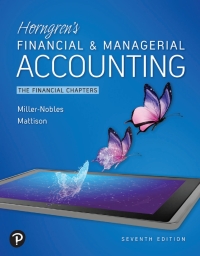Part 1 of 6 [The following information applies to the questions displayed below.) Pete's Tennis Shop has the following transactions related to its top-selling Wilson tennis racket for the month of August. Pete's Tennis Shop uses a periodic inventory system. 10 points Date August 1 Units 8 Unit Cost $149 Total Cost $ 1,192 eBook 5. References Transactions Beginning inventory Sale ($170 each) Purchase Sale ($185 each) Purchase Sale ($195 each) Purchase 10 139 1,390 August 4 August 11 August 13 August 20 August 26 August 29 8 129 1,290 10 11 10 119 1,190 5,062 $ For the specific identification method, the August 4 sale consists of rackets from beginning inventory, the August 13 sale consists of rackets from the August 11 purchase, and the August 26 sale consists of one racket from beginning inventory and 10 rackets from the August 20 purchase. For the specific identification method, the August 4 sale consists of rackets from beginning inventory, the August 13 sale consists of rackets from the August 11 purchase, and the August 26 sale consists of one racket from beginning inventory and 10 rackets from the August 20 purchase. Required: 1. Calculate ending inventory and cost of goods sold at August 31, using the specific identification method Ending inventory Cost of goods sold 6 [The following information applies to the questions displayed below.) Pete's Tennis Shop has the following transactions related to its top-selling Wilson tennis racket for the month of August. Pete's Tennis Shop uses a periodic inventory system. Date Units Unit cost $149 Total cost $ 1,192 August 1 8 bok 5 10 139 ences Transactions Beginning inventory Sale ($170 each) Purchase Sale ($185 each) Purchase Sale ($195 each) Purchase 1, 390 August 4 August 11 August 13 August 20 August 26 August 29 8 10 129 1,290 11 10 119 1,190 5,062 $ For the specific identification method, the August 4 sale consists of rackets from beginning inventory, the August 13 sale consists of rackets from the August 11 purchase, and the August 26 sale consists of one racket from beginning inventory and 10 rackets from the August 20 purchase. For the specific identification method, the August 4 sale consists of rackets from beginning inventory, the August 13 sale consists of rackets from the August 11 purchase, and the August 26 sale consists of one racket from beginning inventory and 10 rackets from the August 20 purchase. 3. Using LIFO, calculate ending inventory and cost of goods sold at August 31. Ending inventory Cost of goods sold k For the specific identification method, the August 4 sale consists of rackets from beginning inventory, the August 13 sale consists of rackets from the August 11 purchase, and the August 26 sale consists of one racket from beginning inventory and 10 rackets from the August 20 purchase. aces 4. Using weighted-average cost, calculate ending inventory and cost of goods sold at August 31. (Round your intermed and final answers to 2 decimal places.) Ending inventory Cost of goods sold $ 5,062 5 For the specific identification method, the August 4 sale consists of rackets from beginning inventory, the August 13 sale consists of rackets from the August 11 purchase, and the August 26 sale consists of one racket from beginning inventory and 10 rackets from the August 20 purchase. K 5. Calculate sales revenue and gross profit under each of the four methods. (Round weighted-average cost amounts decimal places.) ces Specific Identification FIFO LIFO Weighted average cast Sales revenue Cost of goods sold Gross profit












